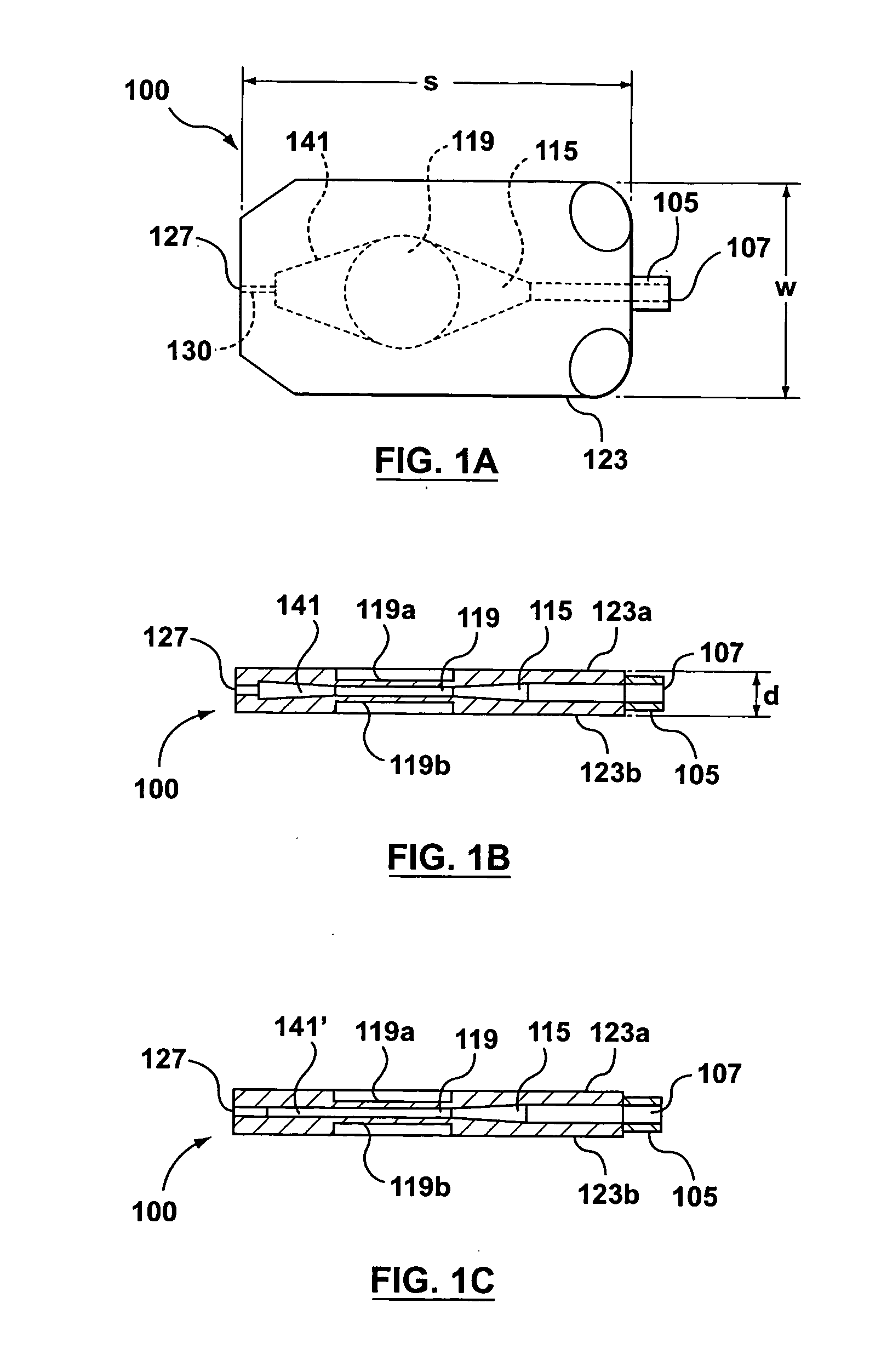Blood collection and measurement apparatus
- Summary
- Abstract
- Description
- Claims
- Application Information
AI Technical Summary
Problems solved by technology
Method used
Image
Examples
second embodiment
[0035] Referring to FIG. 2, shown is a top view of an apparatus 200 suitable for both the collection and measurement of a blood sample according to the invention. The apparatus 200 illustrated in FIG. 2 is similar to the apparatus 100 illustrated in FIG. 1, and accordingly, elements common to both share common reference numerals. The primary difference, illustrated in FIG. 2, is that the vent 127 is now located on a lateral side of the housing 123 as opposed to being directly opposite the inlet 107 along a shared axis. In order to accommodate the new location of the vent 127, a curved outlet capillary tube 230 fluidly connects the rear of the overflow chamber 141 to the vent 127 on the lateral side of the housing 123.
third embodiment
[0036] Referring to FIG. 3, shown is a top view of an apparatus 300 suitable for both the collection and measurement of a blood sample according to the invention. The apparatus 300 illustrated in FIG. 3 is similar to the apparatus 100 illustrated in FIG. 1, and accordingly, elements common to both share common reference numerals. The primary difference, illustrated in FIG. 3, is that the vent 127 is now located on the same side of the housing 123 as the inlet 107. In order to accommodate the new location of the vent 127, an L-shaped capillary tube 330 fluidly connects the rear of the overflow chamber 141 to the vent 127 on the front side of the housing 123.
fourth embodiment
[0037] Referring to FIG. 4, shown is a top view of an apparatus 400 suitable for both the collection and measurement of a blood sample according to the invention. The apparatus 400 illustrated in FIG. 4 is similar to the apparatus 100 illustrated in FIG. 1, and accordingly, elements common to both share common reference numerals. The primary difference, illustrated in FIG. 4, is that the vent 127 is now located on the top surface 123a of the housing 123 as opposed to directly opposite the inlet 107 along a shared axis. In order to accommodate the new location of the vent 127, an L-shaped capillary tube 430 fluidly connects the rear of the overflow chamber 141 to the vent 127 on the top surface 123a of the housing 123. Moreover, in comparison with the apparatus 300 shown in FIG. 3, the L-shaped capillary tube 430 is similar to the L-shaped capillary tube 330 with the exception that the L-shaped capillary tube 430 does not extend all the way to the front side of the housing 123, but i...
PUM
 Login to View More
Login to View More Abstract
Description
Claims
Application Information
 Login to View More
Login to View More - R&D
- Intellectual Property
- Life Sciences
- Materials
- Tech Scout
- Unparalleled Data Quality
- Higher Quality Content
- 60% Fewer Hallucinations
Browse by: Latest US Patents, China's latest patents, Technical Efficacy Thesaurus, Application Domain, Technology Topic, Popular Technical Reports.
© 2025 PatSnap. All rights reserved.Legal|Privacy policy|Modern Slavery Act Transparency Statement|Sitemap|About US| Contact US: help@patsnap.com



